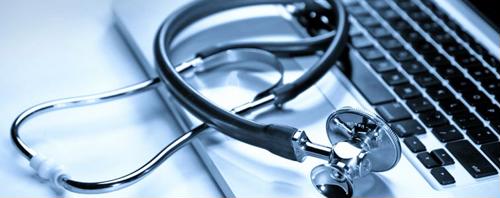
Healthcare industry utilizes IoT technology to impact remote communities
By Max BurkhalterMarch 3, 2022
The Internet of Things (IoT) enables the connectivity of smart devices to allow data collection and sharing across multiple networks and systems. The increasing integration of IoT applications has afforded benefits to virtually all facets of industry. One sector that has seen dramatic outcomes from data sharing, real-time monitoring and artificial intelligence (AI) technologies is the healthcare industry.
The Internet of Medical Things (IoMT) is providing increased connection for communities that once struggled to access healthcare providers. From remote monitoring to virtual appointments with a physician, here are the ways the healthcare industry is taking advantage of technology advancement.
Watchful eye
Remote monitoring capabilities have advanced significantly with IoMT application. The prevalence of chronic diseases like diabetes and cancer, combined with a large subsect of the population advancing in age, have resulted in an increased need for the technology to diagnose, monitor and treat the ailments affecting populations worldwide.
A January 2022 report published by the American Cancer Society forecasts 1,918,030 cancer cases will be diagnosed this year. With estimates pointing to as many as 350 lung cancer (the leading cause of cancer death in America) deaths per day, early detection and treatment is critical to optimize patient survival. Wearable technologies, as detailed in a February 2022 article on the Medical Design Briefs website, can play a vital role in monitoring everything from glucose levels to depression and infection detection.
AI algorithms are able to assist doctors in proper diagnosis and enable real-time healthcare information and data sharing. This functionality could increase efficiencies associated with distribution of applicable medicine or scheduling further treatment appointments.
The United States Census Bureau released data indicating that all baby boomers will be over the age of 65 by 2030, The result of an aging population places urgency on the healthcare industry to ensure infrastructure exists to support the needs of elderly communities.
Remote, but not far
The reality of today's America, influenced by the IoT driven ability to work remotely, has seen human migration patterns shift away from large urban centers where healthcare is readily available.
To stay connected to rural populations within a region, IoMT applications are bridging geographical gaps. Smartphone applications can assist in both diagnosing medical conditions and scheduling appointments. Virtual doctors, beamed directly to the living rooms of patients, are replacing the need to travel to a medical professional's office. Engineers Garage showcases the relative ease in which an individual can interface with IoT technology to access a registered physician.
A July 2021 McKinsey & Company report shows telehealth appointments (the virtual connection to a medical professional) saw a 38x increase when contrasted to pre-pandemic usage rates. By allowing convenient, remote connection to qualified professionals, the healthcare industry is taking advantage of unprecedented IoT connectivity.
Perle is proud to partner with healthcare providers by offering serial to ethernet solutions. To learn more about how Perle provides efficient, reliable connectivity via industrial switches and terminal servers, visit our healthcare solutions page.




